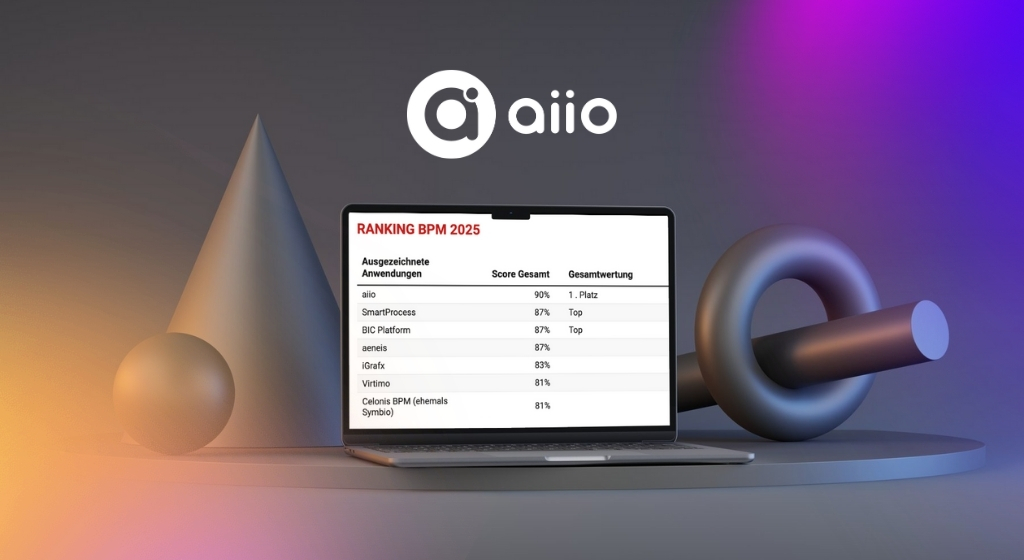Common sources of error in process management: How to avoid them with AI

Why errors in process management should be avoided
Are a few small errors really that dramatic? Unfortunately, yes. Errors in process management don't just make your company inefficient - they can be really expensive. Time and resources are lost, customers and employees are dissatisfied and, in the long term, your position on the market may even suffer. It is therefore worth knowing the typical pitfalls and avoiding them.
When process management becomes a flash in the pan
A classic mistake: process management is treated as a project, not as a permanent task. A consultant comes along once, all processes are documented, neatly filed in folders - and then nothing happens. After a few months, the processes are outdated because framework conditions have changed, but nobody has adapted them. That is wasted potential.
Process management must be anchored in the company. Someone is needed to ensure that processes do not gather dust. Continuous improvement is not a nice-to-have, but necessary to remain competitive in the long term. AI-supported monitoring tools can help here by keeping an eye on the status of your processes and automatically making suggestions for improvement. These tools learn from past changes and proactively suggest adjustments before problems arise.
When nobody knows who is responsible
Unclear responsibilities are poison for any process management. If nobody knows exactly who is responsible for what, a vacuum is created. Tasks are left undone, everyone thinks the others will do it, and in the end no one is responsible. This leads to delays and inefficiencies that could actually be easily avoided.
The solution sounds simple: define and communicate clear roles and responsibilities. Everyone needs to know what their tasks are and where their responsibility ends. Modern AI tools can support this by automatically assigning roles based on skills and availability. This ensures that the right people take on the right tasks and that no one is left in the dark.
When aimless optimization is useless
Without clear goals, process optimization is like driving a car without a navigation system. You may be moving forward, but it is unclear whether you are heading in the right direction. Process improvements need a clear direction. What do you want to achieve? Shorter throughput times? Fewer errors? Higher customer satisfaction? Without measurable goals, you cannot assess whether your measures have been successful.
AI can help you define realistic and measurable goals by analyzing process data and KPIs. It regularly monitors progress and provides feedback on whether you are on the right track or need to make adjustments. This creates transparency and ensures that everyone is pulling in the same direction. It also motivates the team when it is clear what you are working towards together.
When the wrong construction sites are being worked on
Another common mistake: you optimize the wrong processes. Perhaps an unimportant process is perfected down to the smallest detail, while the really important processes bob along. This often happens because the unimportant processes are easier to work on or because they are currently the focus of attention. But this is not strategically clever.
The trick is to set the right priorities. Which processes have the greatest impact on your success? Where is the greatest potential? Data analysis and pattern recognition through AI can help to identify and automatically prioritize the most important processes. These prioritizations are based on real-time data and relevant business goals, ensuring that your resources are deployed where they will bring the most benefit.
When nothing works without support from above
Process management initiatives fail alarmingly often because the management level is not behind them. Perhaps the topic is dismissed as unimportant, or there is a lack of understanding of the benefits. Without support from the top, it is almost impossible to implement necessary changes. Employees quickly notice when management is not behind something, and implementation is correspondingly half-hearted.
The solution: convincing management with data and facts. AI can be a powerful ally here by providing well-founded analyses and forecasts. AI-based dashboards and reports show the concrete benefits of process optimization in a transparent and comprehensible way. When managers see in black and white that investments in process management are paying off, their willingness to support the topic increases considerably.
If everyone does it differently
A lack of standardization leads to chaos. If every employee carries out processes a little differently, inefficiencies arise and the error rate increases. What works for employee A may not work for employee B because they both use different procedures. Uniform standards are crucial for efficiency and quality assurance.
AI can help to identify standardization patterns and automatically optimize processes according to these standards. Inconsistent procedures are thus minimized and uniform quality levels are ensured. This does not mean that everything has to become rigid and inflexible - but the fundamentals should be standardized so that everyone is working from the same basis.
When automation potential is left untapped
Many companies are not exploiting the potential of automation. Routine tasks continue to be carried out manually, even though they could easily be automated. This costs time and money. Automation is no longer a luxury, but a necessity in many areas in order to remain competitive.
AI can be used to automate highly repetitive and time-consuming tasks. Robotic Process Automation (RPA) and AI-supported automation technologies can achieve significant efficiency gains and cost savings. Your team can then focus on value-adding tasks that actually require human judgment and creativity. The routine work is done by the machine.
If it becomes too detailed OR too superficial
There are two extremes in process documentation, and both are problematic. Either processes are described in such detail that nobody can implement them because they are far too complicated. Or the documentation is so superficial that important aspects are overlooked and everyone has to interpret how it might be meant. Both extremes lead to problems during implementation.
Finding the golden mean is not easy. AI can help by analyzing patterns and correlations and suggesting the optimal level of detail. In this way, processes are documented in an understandable way without missing important information or turning the documentation into an unreadable monster. The balance between comprehensibility and completeness is crucial.
When the customer is forgotten
Process optimizations that ignore the needs of customers are ultimately pointless. No matter how efficient you are internally, if the customer is dissatisfied in the end, you have lost. Customer needs should always be at the center of process design. What good is it if a process works great internally, but the customer is frustrated because their request has to go through three departments?
By analyzing customer feedback and data, AI can help to better understand actual needs. This not only optimizes processes internally, but also offers customers real added value. This leads to greater satisfaction, more loyalty and ultimately to better business success. Customer focus is not just a buzzword, but a decisive success factor.
When processes gather dust
Once documented, valid forever? Unfortunately not. Processes need to be regularly reviewed and updated, otherwise they become obsolete. The world is changing, technologies are evolving, market conditions are changing - and your processes have to keep up. Outdated processes can no longer meet the new requirements and will slow you down.
AI-supported monitoring tools continuously analyze process data and automatically provide warnings and suggestions for updates when changes are detected. This enables proactive adjustments to be made before inefficient conditions occur. You don't have to wait until a process breaks down - the system reports when action is required.
Conclusion
Errors in process management can slow down your company considerably and become expensive. The good news is that most of these mistakes are known and avoidable. With the right strategy and the possibilities offered by modern technology - especially AI - you can avoid many typical pitfalls.
Process management is not a one-off action, but an ongoing task. It requires clear responsibilities, measurable goals, the right priorities and support from the management level. Standardization, automation and regular updates are other important building blocks. And never forget: in the end, it's all about offering your customers a better service.
The most important errors at a glance:
- Lack of anchoring: treat process management as a project instead of a permanent task
- Unclear responsibilities: Nobody knows exactly who is responsible for what
- Missing goals: Optimization without measurable objectives
- Wrong priorities: Important processes are neglected, unimportant ones overemphasized
- Lack of management support: senior management is not behind the initiatives
- No standardization: everyone does it differently, chaos ensues
- Missed automation: potential remains untapped
- Extreme documentation: Too detailed or too superficial
- Customer blindness: customer needs are ignored
- Outdated processes: No regular review and update
Don't hesitate, ask directly
Please use our contact form. Our team will get back to you as soon as possible.

.jpeg)



